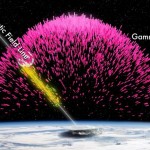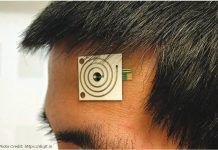 NASA’sFermi Gamma-Ray Space Telescope has spotted antimatter particles being flung into space during thunderstorms in the Earth’s atmosphere announced this week the American Astronomical Society at their meeting in Seattle. This is the first direct evidence of a phenomenon that scientists have suspected since 2009.
NASA’sFermi Gamma-Ray Space Telescope has spotted antimatter particles being flung into space during thunderstorms in the Earth’s atmosphere announced this week the American Astronomical Society at their meeting in Seattle. This is the first direct evidence of a phenomenon that scientists have suspected since 2009.
As everybody knows, antimatter is the same as regular matter except that each particle has an opposite charge. While an electron has a negative charge, its antimatter counterpart, a positron, has a positive charge and they could annihilate each other when they get too close. Very rare you will find antimatter in our universe, since it annihilates almost instantly when it comes into contact with matter.
Scientists can only make tiny amounts, even in the Large Hadron Collider – LHC. Now it’s looking as if antimatter might not be quite so exotic as we thought; thunderstorms might routinely produce antimatter beams via a byproduct of lightning known as a terrestrial gamma ray flash (TGF).
Until quite recently, scientists believed that most gamma-rays are produced by cataclysmic events in distant galaxies, such as the death of supermassive stars. But thanks to the advent of gamma-ray telescopes, like Fermi, we’ve known about terrestrial gamma radiation since 1994 –“probably the last place we ever expected to see [them],” said Gerald Fishman, an astrophysicist at NASA’s Marshall Space Flight Center, told Discovery News last year.
One way to create such short bursts of gamma rays is through the collision — and subsequent annihilation, as the mass of those particles converts into energy — of an electron and a positron. The Fermi Space Telescope found hints in 2009 of the telltale pattern associated with positrons in terrestrial gamma rays stemming from lightning storms.
Under the right conditions, strong electric fields — the kind typically found near the tops of thunderstorms — can trigger an upward avalanche of high-energy electronics that in turn interact with the atmosphere to create a natural “particle accelerator,” particularly when combined with the cosmic rays that routinely bombard Earth’s atmosphere. (Such avalanches may also be what triggers lightning.) All those high-energy electrons emit gamma rays whenever they’re deflected by air molecules in the atmosphere, and these are usually detected as a TGF.
This avalanche of electrons can produce so many gamma rays that some transform into electrons and positrons, and these in turn are hurled out of the atmosphere completely. Those antimatter beams are then picked up by Fermi’s instruments. In this case, the telltale signal is gamma-rays at energies of 511,000 electron volts — evidence that an electron/positron pair has annihilated.
The Fermi Space Telescope is so sensitive to these gamma ray bursts that it doesn’t even need to be positioned right over a thunderstorm to detect the TGFs. In one case, the telescope was orbiting over Egypt, but the TGFs it detected came from an active storm in Zambia, a good 1,800 miles south. “Even though Fermi couldn’t see the storm, the spacecraft nevertheless was magnetically connected to it,” Florida Institute of Technology’s Joseph Dwyer said in NASA’s press release. “The TGF produced high-speed electrons and positrons, which then rode up Earth’s magnetic field to strike the spacecraft.”
This doesn’t mean we now know everything about producing large quantities of antimatter or even about TGFs and lightning’s unique role in this process.



